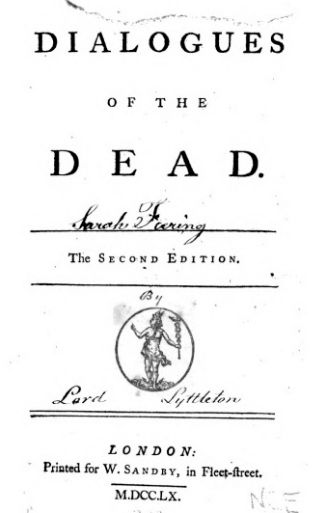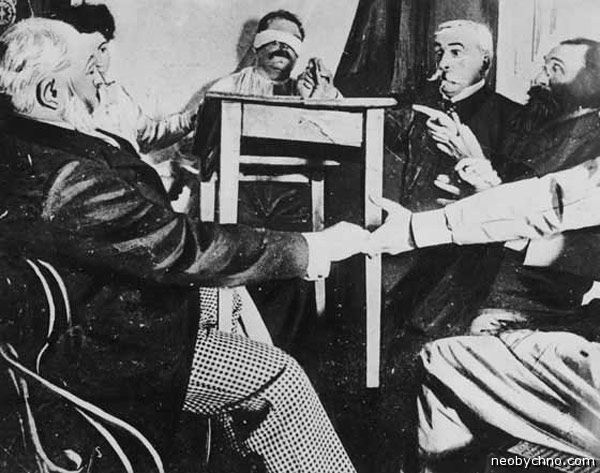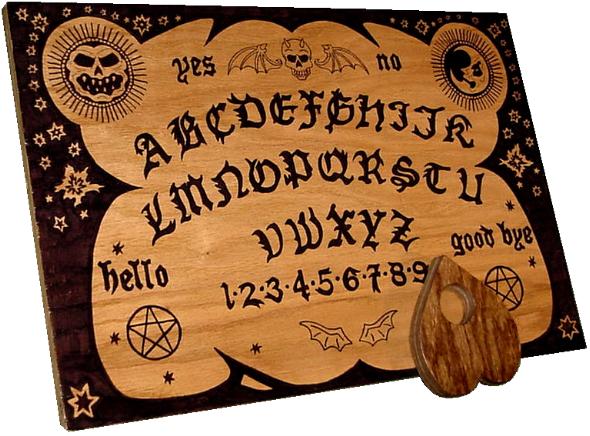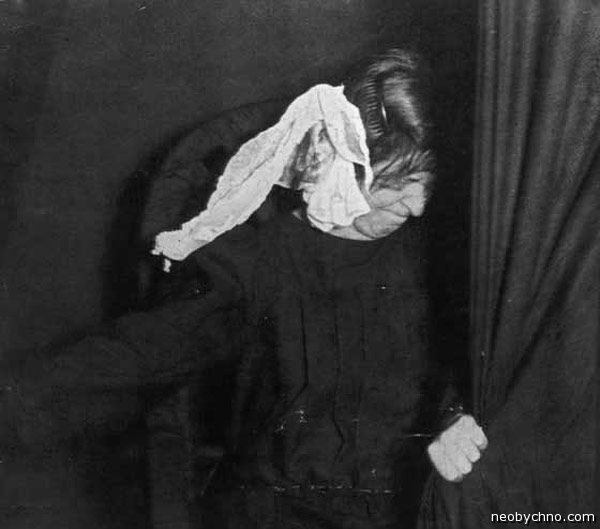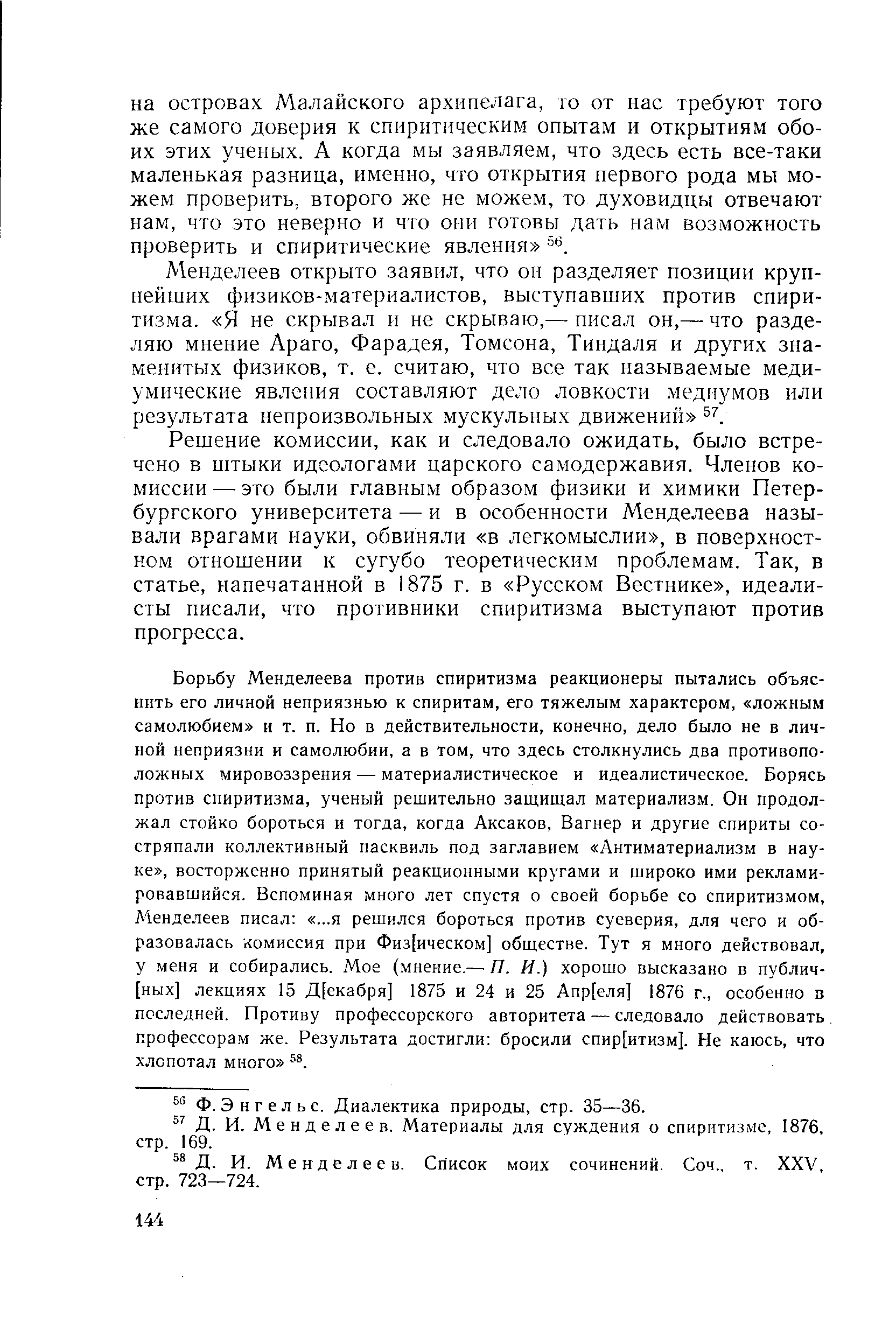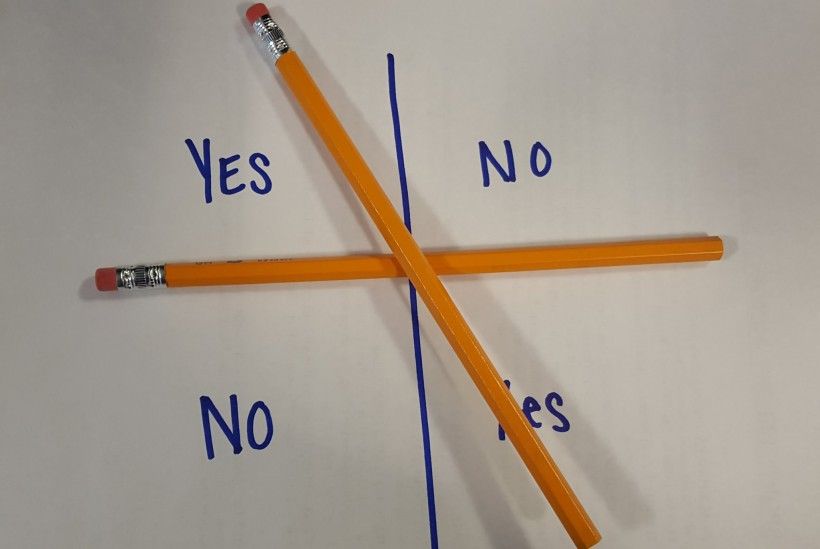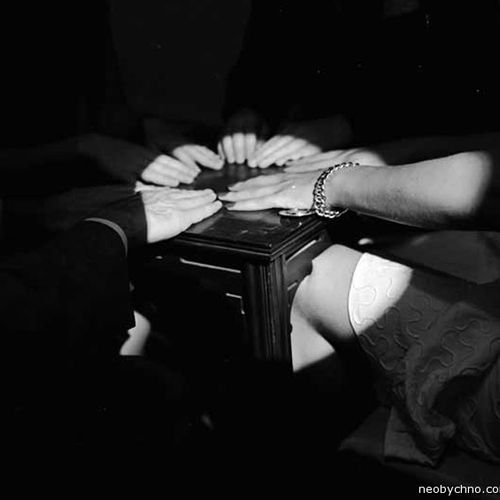
| Added | Thu, 15/06/2017 |
| Источники | А. Кардек. Книга Духов (Париж, 1863)
Материалы для суждений о спиритизме, изд. Менделеева (СПб., 1876)
Карпентер, «Месмеризм, одилизм, столоверчение и спиритизм» (СПб., 1878)
А. Конан Дойль. История спиритуализма. Перевод на русский А. Романов, 2010
|
| Феномены | |
| Версии |
A seance is a mystic ritual in which participants seek to obtain a message from the soul of a deceased person. It is based on the belief in the possibility of manifestation of spirits in the physical world, which is called "spiritualism" (from lat. spiritus "soul, spirit"). A seance is, in fact, controlled by a poltergeist, in which the spirit is not just "noise" and move objects, and does so at the request of the medium.
Priests (shamans, sorcerers, etc.) communicated with the spirits of ancestors or representatives of the other world since ancient times. Ordinary people these activities are rarely involved, but if that happens, it is not directly and only in specially allotted time (a vivid example - the Christmas divination). Accessible and popular to the General public seance began only in the middle of the 19th century, when it began to engage representatives from all layers of society, from servants to kings.
It is believed that for the first time the nature of spiritualism touched the Englishman George Littleton's book, "Communitation With the Other Side" (Rus. "Contact with the other side"), published in 1760. We could not find any mention about this book; it may have meant another, written jointly with Elizabeth Montagu "Dialogues with the dead" (George Lyttleton also by Elizabeth Robinson Montagu "Dialogues of the Dead").
A digitized copy of the book George Lyttleton also by Elizabeth Robinson Montagu "Dialogues of the Dead" from the library of new York.
Dawn of the practice of spiritualism began after 1848 in Gainsville, the state of new York (the city that were part of the district of Arcadia in Wayne County) in the house of a farmer, John Fox, where he lived with his wife and daughters Kate and Margaret. The house, which they moved into this year, was considered "bad". In this house started to happen strange things since the disappearance of passer trader of home appliances staying a few days living there informed the families of Bellow. Previous residents of the home heard noises and seen the Ghost of the man in the black coat. The family of Fox have also heard sounds of unknown origin.
Once Kate woke up, screaming from the feel of that cold hand touched her face. Margaret swore sometimes rough, invisible hands pulling the blankets on her bed. Even Mrs. Fox claimed to have heard the steps that passed through the house and descended the wooden steps into the basement. The head of the family was not a superstitious man. He tried to walk around the house looking for sources of squeaks and knocks in the floorboards and along the walls. He checked the window and the door, trying to detect the vibrations in the frames, which could explain these sounds. But he could find no explanation for the strange noises, causing his daughter was convinced that the house was inhabited by a Ghost.
When the knocks were heard once again, Kate yelled, "follow me!" and twice clapped his hands. Twice there was a knock in response. Came into confusion, Fox was invited to the neighbors ' house. A farmer named William Gusler decided to complicate the communication process and developed a special alphabet to communicate with the spirit as well as the code that allowed a special knock to answer "Yes" or "no".
The Fox sisters gained notoriety for his public sessions, and in the next few years many people suddenly "discovered" the ability to communicate with spirits. So the Fox sisters initiated a whole industry of mediums, which further developed independently.
Studied letters during the session proved to be too time-consuming, noisy and not always suited to the audience. Therefore began to appear other methods of communication between medium and spirit. First came the special Ouija Board with two casters and a pencil could move across the paper and draw letters and symbols, but it was very difficult to decipher. Mediums began to look for more convenient methods, and thus arose the "automatic writing": it was believed that at the time of the TRANS medium is infused in the spirit and moves the pencil in his hands.
As indicators of the presence of the spirit began to use candles and bells. He seance acquired a spectacular view, which was moving furniture, I heard the squeaks, groans and even voice. The tables under the fingers causing the spirit bounced and rose into the air. However, as such communication with the spirits, which suggests answers to the questions of the participants of the session was difficult.
Flight of the table for a seance in France (1870)
Therefore, one of the most common ways to hold a séance was the use of special plates, known as the "Ouija Board". It was inscribed with the letters of the alphabet, numbers and the words "Yes" and "No". Of the session participants placed their fingers (one or two) on a special pointer with a sharp tip and empty the window, which put on a plate and focused on any issue; then, allegedly felt the presence of the spirit of the deceased, they are under his influence, began to move the pointer to the desired characters (letters, numbers, words) to get the answer. Initially this plaque was not associated with mysticism and marketed as Board games, but with the heyday of spiritualism has found a new purpose.
The Ouija Board
This principle is still in use today, including the variants spoken on the territory of the former USSR - "guessing on a saucer" and "divination on the needle", where the saucer and the needle act as a pointer, and the letters written on a large sheet of paper.
Less common was "divination by the book". For that, he took the book, a large pair of scissors and tape. The scissors opened and was located in the middle of the book, which is then secured with tape. Two people had the book on weight over the lugs of scissors. The spirit could answer only "Yes" through the swinging of books and "no" if the book alone. Since this seance was involved at least two people, and there was also significant limitations in questions and answers, the way almost did not survive.
Most people perceived the sessions as entertainment, so the mediums tried to hold their most spectacular. For example, some mediums have practiced materialization, i.e., the manifestation in the presence of a medium outside a living matter of different degrees of consistency and level of organization, able to take forms of faces, limbs and human figures, both complete and inchoate. It was assumed that they materialists on the basis of the so-called "ectoplasm", the source of which is the body of the medium.
Mar Bero at the time of exit from the ears of ectoplasm (1910)
Also widespread spiritualistic photography. The most famous photographer of the paranormal was William Mamler (William Mumler). Usually the photographer was paired with a medium, which ensured the presence of otherworldly entities. As a rule, these were deceased relatives or acquaintances of the visitors with whom they wanted to be photographed.
But not all believed a seance entertainment. For example, Allan Kardec (Hippolyte Leon-Denisar, Rival) began to study the paranormal phenomena that took place in the sessions at the call of the spirits, in 1850. With the support of the daughters of his friend, who performed the role of mediums, he found out about his "mission" which was to bring to humanity some new ideas about the world and life in it. As a result, the Kardec, believing in their own exclusivity, undertook to create their own "Scripture" by spiritual conversations. He was asking the "spirits" questions and recorded their answers. And the answers he received from knocks/claps or letter-by-letter, using the Ouija Board. Two years later, the Kardec decided that you got enough information to formulate "a whole new theory of mankind's existence, his fate and destiny." The main provisions of this theory he outlined in the "Book of Spirits", published in 1856. He then published two other books obtained in the same way.
Despite the craze for spiritualistic sessions of the nobility and famous personalities (such as the writer Arthur Conan Doyle or Tsar Alexander II), there were many opponents of this practice. For example, it acted against a prominent scientist and public figure D. I. Mendeleev, who proposed Physical society at St. Petersburg University to establish a special Commission for the examination of mediumistic phenomena.
"The time has come - he wrote - pay attention to the distribution of classes spiritualistic phenomena in family circles and among some scientists. Lesson tolowercase conversations with invisible beings with knocks, the challenges of human figures through "mediums" are threatened by the spread of mysticism, many are likely to tear off from a healthy view of things and to strengthen superstition, because there is a hypothesis about spirits, which are supposed to produce the said phenomena..."
The Commission, composed of eminent scientists were invited famous abroad and in Russia mediums. Sessions were conducted in conditions that exclude a hoax. For this project Mendeleev was built gauge table, just registered everyone, even the faint pressure of the hands of the participants. The Commission published its conclusion, which ends with the following conclusion:
"Spiritualistic phenomena originate from the unconscious movements or conscious deception, and spiritualistic doctrine (belief in spirits) is superstition".
Massive exposure of mediums was also involved in Harry Houdini.
At the moment almost all phenomena occurring during a session are considered to be explained.
For example, movement of the pointer of the Ouija Board (plates, needles, books) is due to the ideomotor act, i.e. transfer of ideas about the movement of muscles in the execution of this movement. As evidence, we cite the thesis, which anyone can check this yourself: call the spirit cannot correctly answer the questions, the answers to which do not know the participants of the session.
The appearance of ectoplasm on the sessions turned out to be a hoax (it is clearly visible in the photos). As often she used the thin material (chiffon, gas or muslin), sheep lungs, chewed paper, soap, egg white, etc.
The tolowercase was also a trick. For its implementation used a special light tables with holes for fixing pins, fastened to the hands of the medium. There is also a different technique of mystification, which uses photographic equipment. Camera with photographic plate was mounted on a long exposure, and the session took place at a red light, not lightening emulsion. "Spirit" behind the white curtain made the coup of the table, and someone pressed the button and triggered the flash. Subsequently, considering the commemorative picture, no one but the medium and the assistants do not doubt that the table is really flying.
About Ouija photo, we wrote separately.
And even the case of the Fox sisters, who started the history of the Ouija, also found his explanation. In the newspaper new York world on October 21, 1888 was published a confession of Margaret Fox, who told the press that it all began as an attempt to frighten the mother. Naughty sister first imitated the sounds with the aid of readily available materials (e.g., Apple on a string), and later they learned how to snap my fingers (Margaret snapping the joint of the big toe) and other means to reproduce the required sounds. When parents began to invite neighbors, girls afraid to admit his joke and decided to continue. Later the adults decided that it was perfume, and the children clung to this idea. It is believed that this self-exposure of Margaret's well paid, but after realizing the benefits that it brings a temporary, a year later, she disowned him.
Over time, many followers of spiritualism was disappointed in the mediums, and the passion became gradually fade until disappeared. Now Ouija sessions occasionally are addicted to teenagers. As example is the call of the spirit, "Charlie, Charlie", won popularity among British schoolchildren in 2016. For playing "Charlie, Charlie" typically use a couple of pencils and a sheet of paper, divided into four areas with the words "Yes" and "No" (optional, you can choose any other options and increase the number of segments, however, are diagonal to each other elements should be the same).
The location of the pencils in the game "Charlie, Charlie"
It is believed that Charlie has a curse, which he is obliged again and again to answer all the questions he's asked. But who is this Charlie - no one knows. Versions are many: Mexican demon, pagan God or existing in the afterlife, the victim of a violent crime.
According to the journalist from the Washington Post, who investigated the phenomenon in his article, the background to the emergence of "Charlie, Charlie" could be an old Spanish game Juego de la Lapicera (play with pen) - it has a sheet of paper is divided into two zones. In addition, there is another version of "Charlie, Charlie", in which the pencils are placed on the paper, and keep on weight, and the answer is obtained by unpredictable offset. Some media speculated that "Charlie, Charlie" - part of a viral advertising campaign horror movie "Gallows" ("The Gallows"), but rather fit into the long-developing trend rather than started it.
As in other cases, movement of the pencils can be explained by science. This is the same ideomotor act, as in the case with the Ouija Board. Movements also contributes to the fact that this construction is unstable, so it's fairly easy breathing or careless gesture that the pencil began to move.
Thus, appearing a half-century ago, a seance, despite all the explanations and disclosures, find your audience, adapting to modern life. People love to be scared, excite your nerves and believe that life after death is not the end.
Translated by «Yandex.Translator»
It is believed that for the first time the nature of spiritualism was touched by the Englishman George Littleton in the book "Communication With the Other Side" (Rus. "Contacts with the other side"), published in 1760.
The dawn of the practice of spiritualism began after the case of 1848 in Hydesville, New York (a city that was part of the Arcadia district in Wayne County) in the house of farmer John Fox, where he lived with his wife and daughters Kate and Margaret. The Fox sisters became famous for their public sessions, and over the next few years, many people suddenly "discovered" their ability to communicate with spirits with the help of knocks. So the Fox sisters laid the foundation for a whole industry of mediums, which further developed independently of them.
Log in or register to post comments
